Korean fruits may provide insight into Korea’s geographical and cultural backgrounds. Each region has its unique fruit that grows exceptionally well – driving economic growth and supporting the stability of health and well-being.
After reading this article, I genuinely hope that you will find the courage to experience these delicious fruits alongside the wonderful delicacies in Korean. Some you have seen on TV but haven’t had the chance to try. Let’s learn about them now!
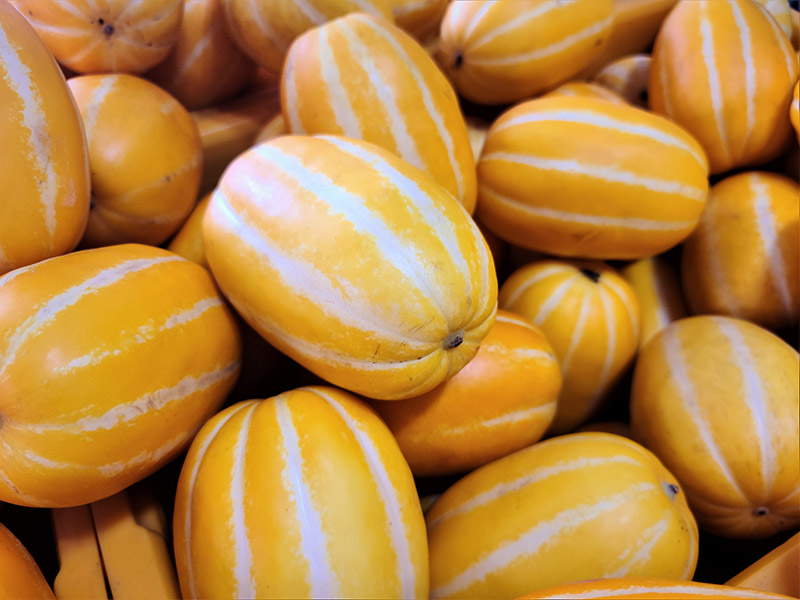
These Korean Citrus Will Leave You Wanting More
You may have seen jars of preserved citrus on display at Korean supermarkets. That is reflective of the popularity of citrus in Korea. They are homeopathic remedies to relieve the common cold and a cooling beverage to quench your thirst.
1. Noji Tangerine: Gamgyul (노지감귤)

Noji tangerines are only one of the many types of citrus grown in the famous South Korean island of Jeju. Unlike other heavily cultivated types of citrus on the islands, the Noji tangerines are left to fruit naturally in open fields.
“Noji” refers to the open space where the tangerine trees are grown. Also, because they can grow naturally, the noji tangerine fruits are prone to physical and cosmetic imperfections.
Be that as it may, the fruits have a well-balanced taste between the sourness and sweetness. The juicy flesh is tasty, and the peel is also pleasantly fragrant. Tourists who come to Jeju Island can have the opportunity to handpick Noji tangerines to eat and take home.
Nutrients: Noji Tangerines are rich in citric acid and vitamin C.
Season: Noji tangerines are ready for harvest in the winter.
How to eat: You can peel the skin and eat the supremes.
2. Dekopon Mandarins: Hallabong (한라봉)
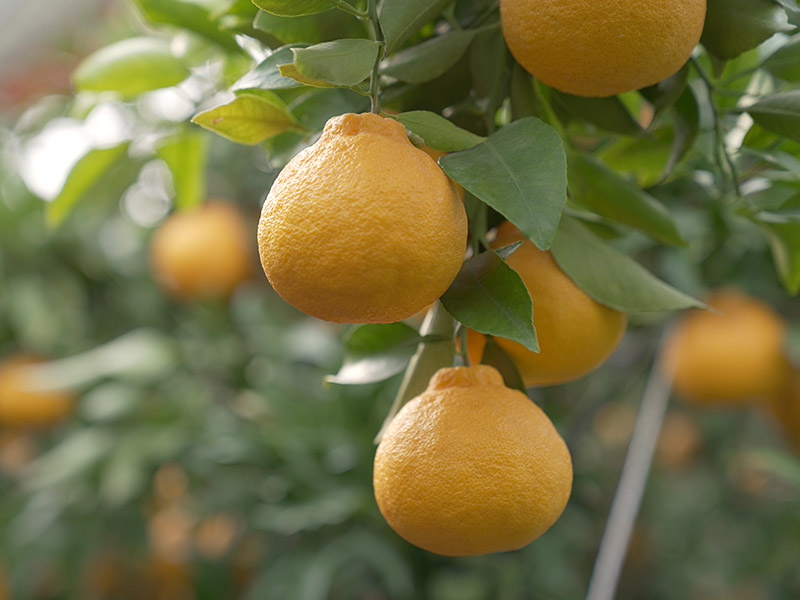
Hallabong is another type of citrus grown widely on Jeju Island. Hallabong is the seedless variety of satsuma oranges. Hallabong is a Japan-originated fruit in Japan with name Dekopon in Japanese.
An attractive defining characteristic of a Hallabong is the small bump on the head of the fruit. The fruit also has a thick, bumpy skin that is easy to peel off, just like a mandarin. This plant is often grown in agricultural greenhouses in Jeju island.
The seedless flesh also happens to be sugary sweet. The Hallabong mandarin is so sweet that its citric acid content only measures up to less than 1.0 percent. The flavor of Hallabong is also delightful, similar to eating a piece of orange candy.
Nutrition: Hallabong is rich in Vitamin C, A, potassium, and dietary fiber.
Season: Hallabong is harvested from November to December or spring months.
How to eat: Just peel off the bumpy skin and eat the juicy, sweet flesh.
Discover the sweet flavors of the Hallabong in this taste-testing session.
3. Setoka Tangor: Cheonhyehyang (천혜향)
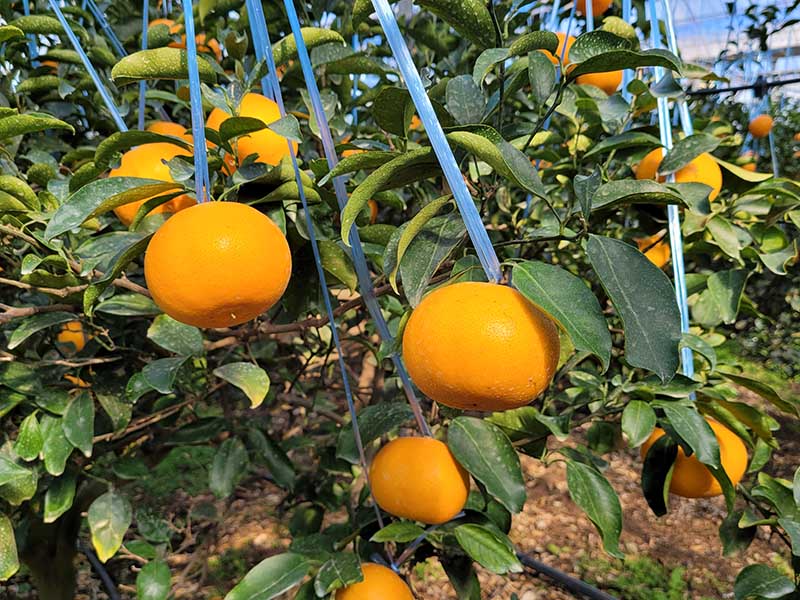
Another deliciously sweet addition to popular citrus fruits in South Korea is Cheonhyehyang, which is known as Sekota in Japanese and came to Korea from the country. This sweet tangor fruit is a popular ingredient in many desserts in both nations.
Like the Hallabong, Cheohyetang is a hybrid between the Murcott tangor and another citrus plant. This type of tangerine is twice the size of a normal tangerine. The flavor of Cheohyetang is desirable for making citrus-inspired desserts.
Cheonhyehyang also has a thin and aromatic peel. The fragrant rinds are used to flavor various light dishes in Korea and Japan. The supremes of this sugary citrus will also make any dessert better by adding a freshness that is hard to compare.
Nutrition: Cheonhyehyang is rich in natural sugar and vitamin C.
Season: Koreans harvest their Cheonhyehyang from January to April.
How to eat: You can use the peel in citrus desserts or eat the fruit fresh.
4. Yuzu Lemon: Yuja (유자)
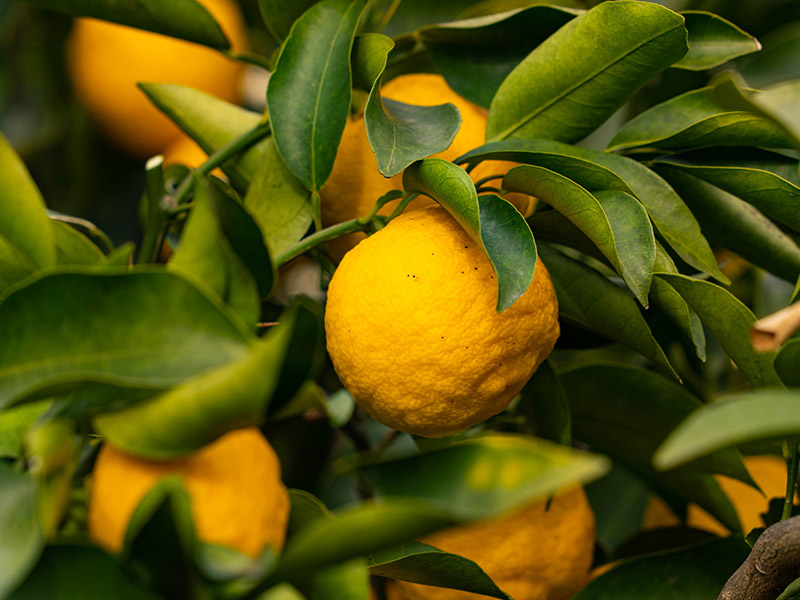
Yuzu is a specialty citrus variety in many East Asian countries. This uniquely fragrant fruit originated in central China. Although many people know Yuzu as a significant ingredient in Japanese cuisine, Koreans have also perfected the use of this citrus.
This fruit has been taking the culinary world by storm with its exciting flavor profiles. Professional chefs describe Yuja as “a cross between a lime, lemon, and a grapefruit.” While the outer skin of the Yuja may look unappealing with its imperfections, the inside is a different story.
In Korean culture, handling Yuja involves washing the fruit, de-pulping, and submerging the Yuja pieces in sugar or honey. The sugar content draws out the moisture and oil from the Yuja and turns into a thick, viscous syrup with many culinary and medicinal uses.
Nutrients: Yuja is rich in vitamins A and C and powerful antioxidants such as flavonoids, carotenoids, and limonoids.
Season: Yuja ripens on the tree around the October-December period.
How to eat: Yuja is too tart to eat by itself. The best applications for Yuja are jams, pies, salads, and pastries. Koreas famously cure Yuja in honey to make Yujacha. There are even talks about how Korean Yuja has a thicker skin and a stronger fragrance than its counterparts elsewhere.
There is so much to learn about this luxurious citrus – Yuzu.
These Korean Berries Will Make You Fall In Love
In the botanist’s categorization of berries, the definition states that a berry is a fleshy fruit with many seeds. However, some of the items on this list might surprise you because it is not common knowledge that they are a type of berry.
5. Watermelon: Subag (수박)
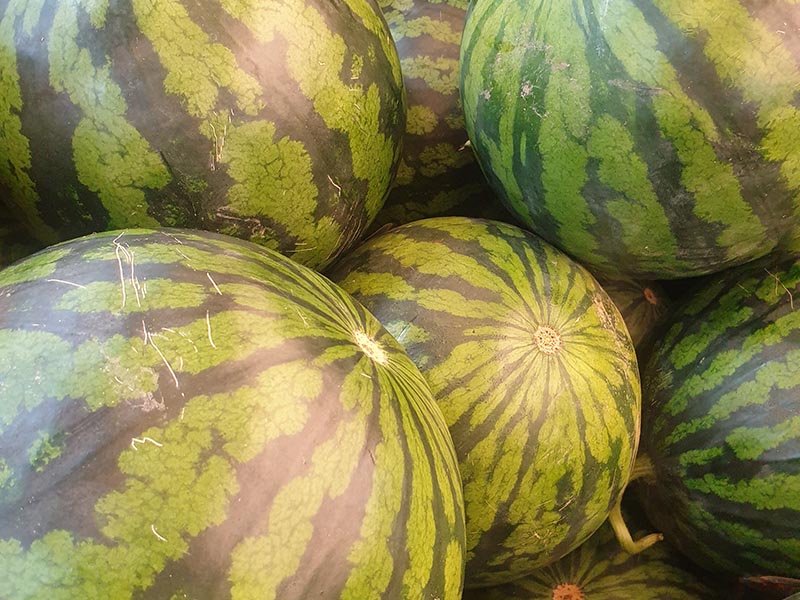
Watermelon is one of the most unexpected members of the berry category. This elongated fruit with a hard rind is one of the most common fruits in the entire world. There are speculations that Korean watermelon has the highest sugar content of all, which is why people enjoy it so much.
The watermelon fruit belongs to the Cucurbitaceae family, which also includes cucumbers and other types of gourds. The telltale sign of a ripe watermelon is a succulent green skin with defined striations (stripes). When you tap the watermelon, it should sound hollow.
Koreans have utilized watermelon in various ways. One of the most popular methods is making a traditional watermelon fruit punch called Subak Hwachae. This drink is sweet, tangy, and served chilled to maximize the refreshing quality.
Nutrients: Watermelons are very low in calories and are only rich in water and simple sugar.
Season: The peak season for watermelon is between June and August.
How to eat: You need to carve away the hard rinds to eat the juicy flesh, but the rinds are edible and are sometimes used for pickling.
6. Persimmon: Gam (감)
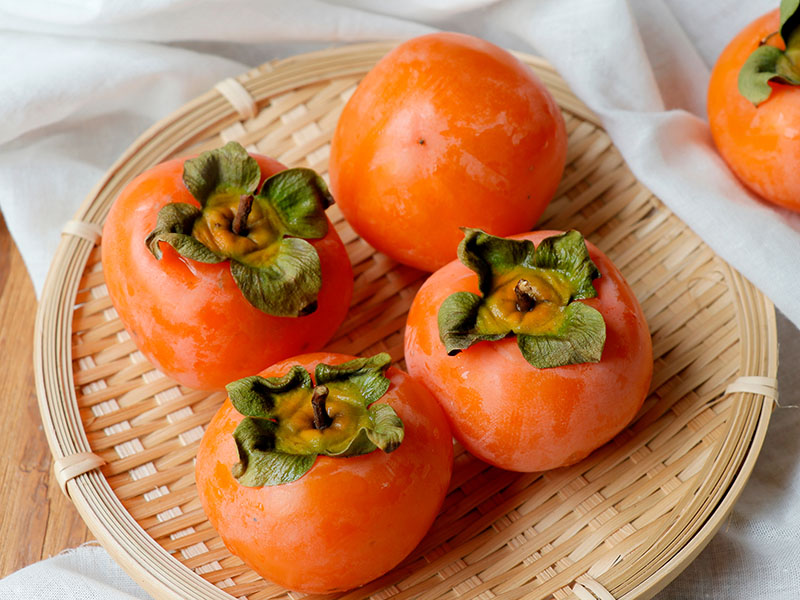
In South Korea, there are numerous ways for people to create dishes featuring persimmons to enjoy this wonderful fruit. During the autumnal season, you will be in awe to glimpse how the streets, houses, and storefronts put up dried persimmons as decorations.
There are two types of persimmons that you can find in South Korea: astringent and non-astringent persimmons.
Astringent persimmons have a higher tannin content. The abundance of tannin makes the unripe persimmons extremely bitter and quite unpleasant. When the astringent persimmons ripen, they have a drying and puckering effect on your mouth.
Non-astringent persimmons also have tannin, but not as much. This quality makes non-astringent persimmons a great contender for a crispy, fresh snack. Korean people even eat these fruits straight from the trees when ripe.
Nutrition: Persimmons are rich in magnesium, phosphorus, folate, and vitamins B1 and B2.
Season: The prime season for harvesting persimmons is late fall or early winter
How to eat: The peel of persimmon is edible, so you can bite into the fruit like an apple. You can cut the fruit in half and eat the flesh with a spoon like custard.
Learn about all the types of persimmons you can try in Korea.
7. Korean Blackberry: Bokbunja (복분자)
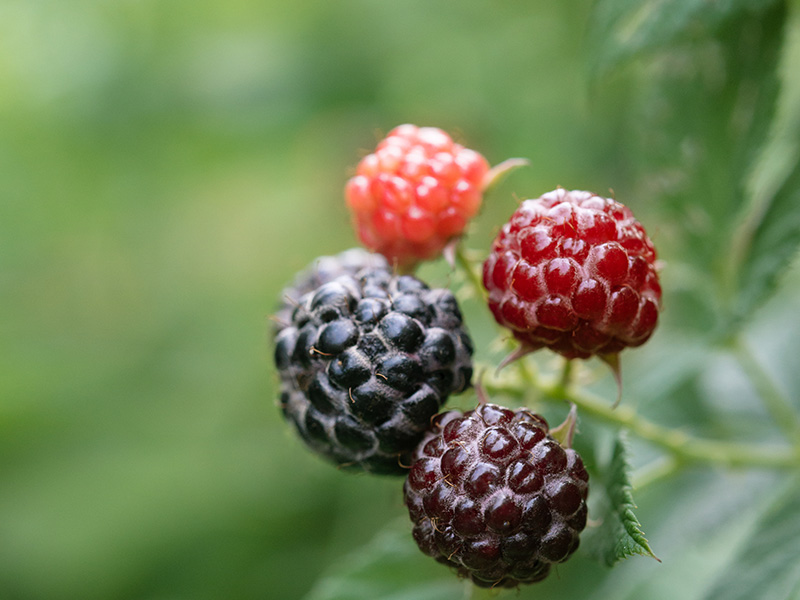
The scientific name of Bokbunja is Rubus Coreanus, categorizing it into the same family as the common raspberry you can find in western grocery stores. The name Korean blackberry might be misleading since Bokbunja is different from the common blackberry.
Its correct name should be black raspberries because of the similarities in shape and flavor profiles. A slight difference lies in the flavor between Bokbunja and blackberry. Western blackberries are more tart, whereas Bokbunja is sweeter.
Interestingly, Bokbunja is the main ingredient in one of the popular Korean beverages: Bokbunjaju or Bokbunjajoo. The wine gets its vibrantly signature red color from the tannin that is abundant in the skin of Bokbunja. Just like the fruit, the drink is also slightly sweet.
Nutrition: Bokbunja is rich in antioxidants, vitamins C and A, anthocyanin, and fiber.
Season: June to August
How to eat: You can eat the whole berries fresh or ferment them into a drink.
8. Kyoho Grapes: Podo (교호)
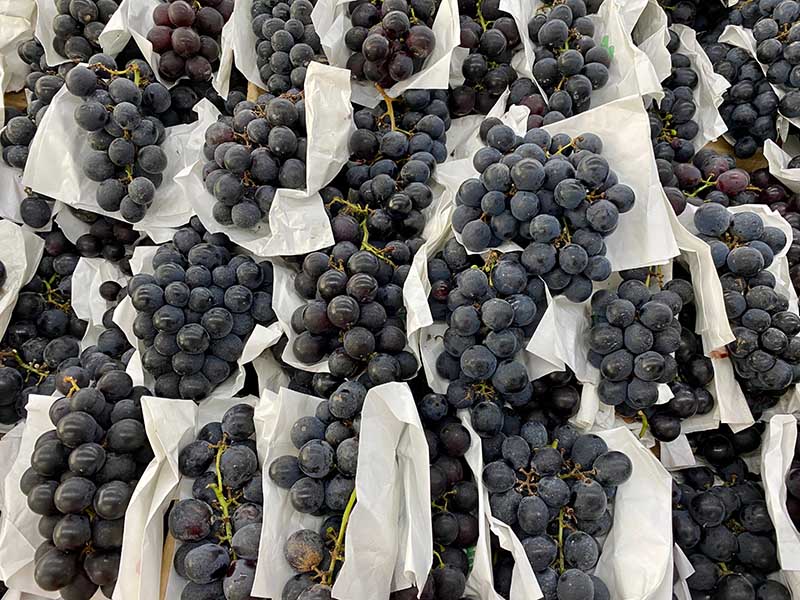
Kyoho grapes are a fox grape species mixing between the Centennial and the Ishiharawase grape varieties. For your information, fox grapes refer to the foxy musk found in these grape varieties. The foxy title doesn’t hint at any fox animal and grape relationship
Kyoho grapes first hit the market in 1937 in Japan. It became even more widespread because of its juicy flesh and easy-to-peel skin. Now, Korea, Japan, Taiwan, and mainland China heavily cultivate Kyoho grape crops due to the pleasant flavors and textures.
Restaurants and vendors who sell Kyoho grapes in desserts peel the fruit before serving to maximize the sweetness. Like most grape skins, Kyoho grape skins have a high tannins content, which can have a drying effect on your mouth.
Nutrition: Kyoho grapes have a high water content that benefits hydration. Grapes are also high in antioxidants, flavonoids, myricetin, and quercetin.
Season: This fruit is in its peak quality for only a short period between August and September.
How to eat: You can eat the flesh and spit out the seeds, or peel off the skin and enjoy just the juicy flesh.
9. Magnolia Berry: Omija (오미자)
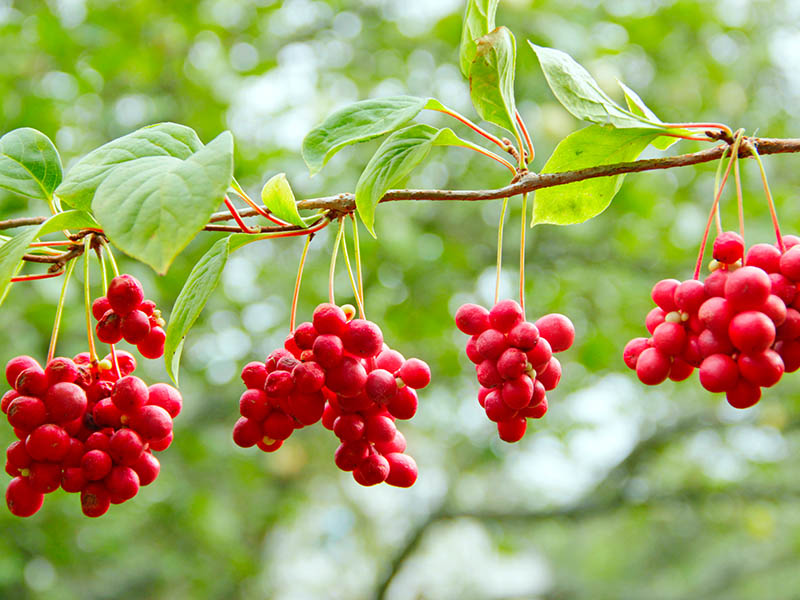
Magnolia berries are native to the regions of Russia, China, Japan, and Korea, where the cultivation and harvest of these berries are much more prevalent. Two reasons that made Omija so famous are the health benefits and the distinctive flavors they carry.
Omija also bears the nickname “five flavor berries” because it boasts the elements of sweetness, saltiness, pungency, bitterness, and sourness. You should also know that the bitterness and sourness turn even more intense if you steep the berries in hot water.
The cold water doesn’t draw out the sourness and bitterness as much as the sweetness. For this reason, the cold-water steeping method is more common when making Omija tea. Enjoy the tea with pieces of pear, honey, or some simple sugar.
Nutritious: Omija is packed with antioxidants and adaptogens.
Season: Fresh Omija is harvested from the beginning of August to the end of September
How to eat: The taste of the magnolia berry is not suitable for human consumption. Its primary use is making drinks. You can steep the berry in hot or cold water to draw out the flavor. Sweeten the tea with some honey or sugar and garnish with some pear.
This is an excellent introduction to enjoying Omija.
These Local Fruits Are The Best Way To Enjoy Korea
These fruits are the best judges of Korean seasons, and I believe they will instill a strong appreciation for Korean agriculture in you. Everything from the island soil to the harsh weather cannot deter the resilience of Korean fruit farmers, so show these Korean fruits some love.
10. Green Plums: Maesil (매실)
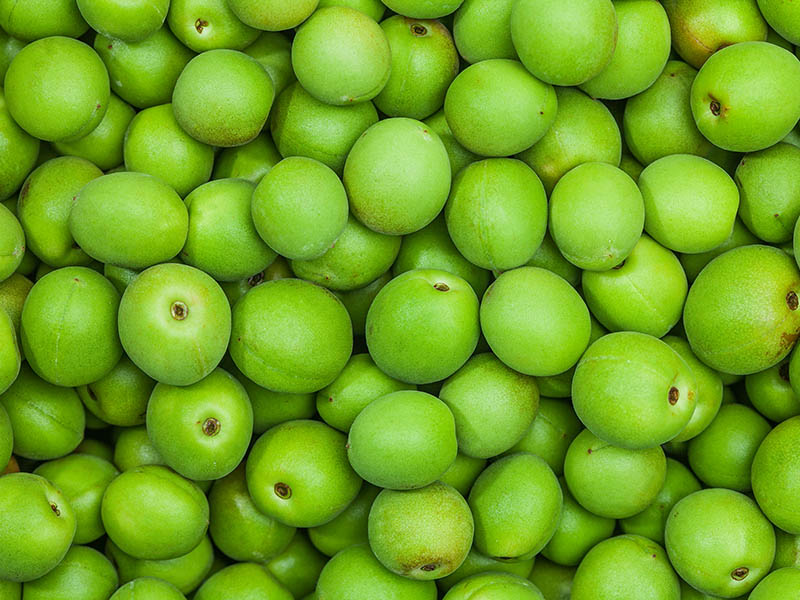
Green plums have more applications than you may think. The plum tree is a sacred symbol in Korea, with the white flowers adorned as a symbol of purity, hope, and perseverance. The plum flowers (Maehwa) symbolize spring just around the corner.
The fruit from the Maehwa is called Maesil or Korean green plums. Maesil is green and has firm flesh. Though the sheer sourness of these fruits makes them harder to eat straight-up, Korean people have found that curing them in sugar makes a delicious drink.
Plum tea – Maesil Cha is a Korean creation from submerging green plums in sugar to form a syrup. Take it a step further by fermenting the green plums with sugar and white alcohol to make Maesil Ju (Green plum wine). These are two most common ways to enjoy Maesil in Korea.
Nutrition: Maesil is rich in fiber and antioxidants.
Season: Green plum comes into season between May and June.
How to eat: Maesil is not commonly consumed raw because it is too sour. Popular applications include making syrups and alcohols.
11. Fuji Apples: Sagwa (사과)
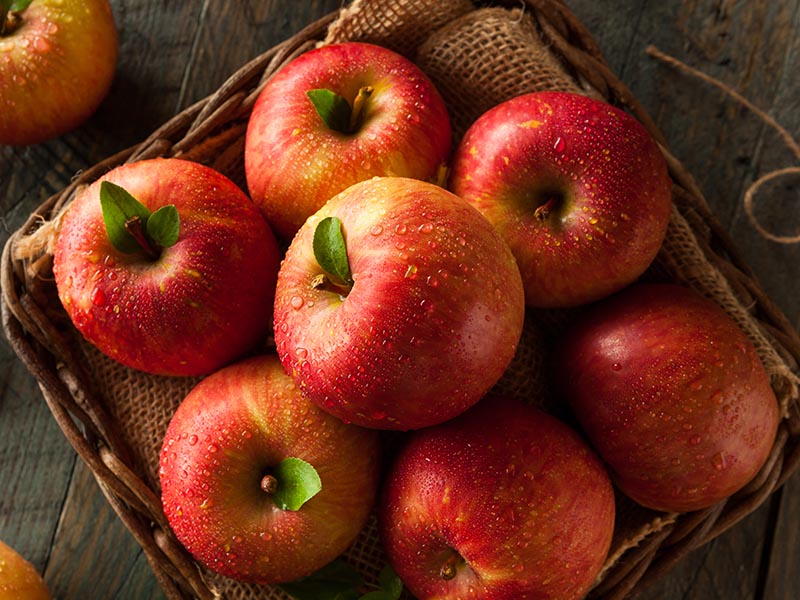
Fuji apples are arguably one of the most preferred apple varieties globally. In Japan, the Fuji apples are undefeated for “most consumed.” “Fuji” is an homage to where these apples were first grown, Fujisaki.
The same phenomenon occurs in Korea. Though Fuji apples are not indigenous to Korea, it is a widespread practice to gift and eat Fuji apples whenever they come in season. An interesting fact about the apple market in Korea is that most of Korea’s apple merchandise is domestic.
Korea’s phytosanitary regulations prohibit the import of fresh apples into the Korean market. This restriction boosts the integration of Korean domestic apple production and raises the apple market prices.
Nutrition: Apples are high in dietary fiber, vitamin C, and antioxidants
Season: Korean apples are best enjoyed in fall.
How to eat: You can eat the entire apple raw except for the seeds.
12. Korean Melon: Chamoe (참외)

When you see Chamoe sold in South Korea, that means summer is here. This golden melon has been around for hundreds of years in Korea, dating back to the 12th century. Even written records from the Joseon Dynasty describe different types of Chamoe.
This fruit isn’t like your typical musk melon. Chamoe is smaller and crisper. The flesh is less sweet, making it more refreshing. The exterior skin of Chamoe can have the identifying pale yellow stripes, but the bright sunshine color is hard to miss.
If you prefer the sweetest variety of Chamoe, the recommended variety is the Euncheon Chamoe. This cultivar was introduced to Korea back in 1957 from Japan. It possesses a more vibrant color and a sweeter, juicer flesh.
Nutrients: Chamoe is high in calcium, vitamin A, and vitamin C.
Season: Chamois is available throughout summer to early fall.
How to eat: You can eat the whole fruit, even the peel. But it is recommended that you remove the chamoe skin and eat the flesh.
Curious about chamoe? Here is everything you need to know.
13. Peaches: Bogsung-Aui (복숭아)
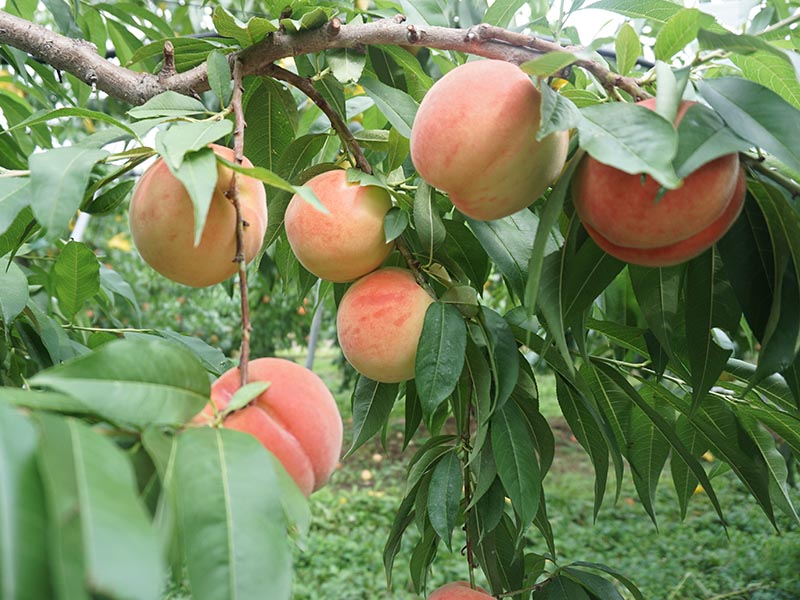
Peaches have a winding history that started in China. Peaches have been a popular crop in East Asian countries since the Neolithic period. People have long known how to cultivate numerous varieties of this fuzzy fruit.
There is a particular cultural significance that peaches carry in Korean society. It symbolizes honor, prosperity, and longevity. There is also a folk legend that if you find a peach with two stones at the center, the following winter will be mild.
There are two types of peaches that you will most likely find at the grocery store, which are the clingstone variety and the freestone variety. The names distinguish whether the seed is adhering to the flesh of the fruit or not.
Nutrients: Raw peaches are an excellent source of antioxidants, folate, and vitamin C.
Season: Peaches are usually the softest and juiciest in the late summer, especially around August.
How to eat: You can peel off the peach’s rind to eat the flesh, but the skin is also edible. Only the seed is too tough to eat.
14. Korean Pear: Bae (배)
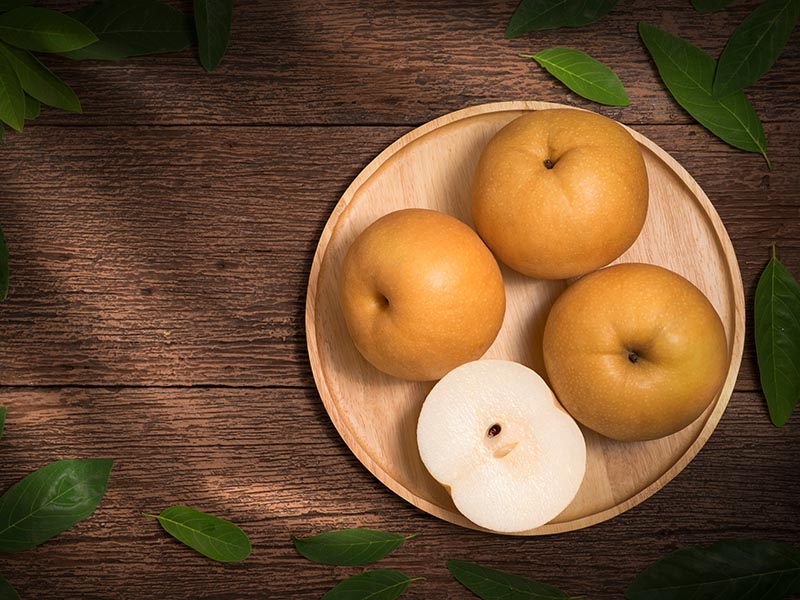
Korean pear goes by many other names, including Japanese pear, Chinese pear, Papple, etc. This fruit is native to East Asia and is a heavily cultivated variety in many Southeast Asian countries. Though, nowadays, you can also find Korean Pear in many European countries.
This pear is unlike other Western pear varieties because it has higher water content and is relatively more crispy. Another noticeable difference is the size. Bae is considerably larger than other varieties of European pears.
Korean pear is more expensive than other pears, so this pear is often eaten fresh with friends and family. Korens cultivate Bae more heavily, making it more widely accessible. So you will be able to find many more culinary applications for Bae in Korea.
Nutrition: Korean pear is an excellent source of dietary fiber, potassium, vitamin K, folate, and other essential minerals.
Season: Korean pear is best harvested from August to September.
How to eat: You can totally eat the skin of the Korean pear, but it may be abit waxy. It is best to peel the skin of the Korean pear and enjoy the juicy flesh.
Mouth-watering Korean pears should be an item on your bucket list.
15. Dragon Fruit: Yong Gwail (용 과일)
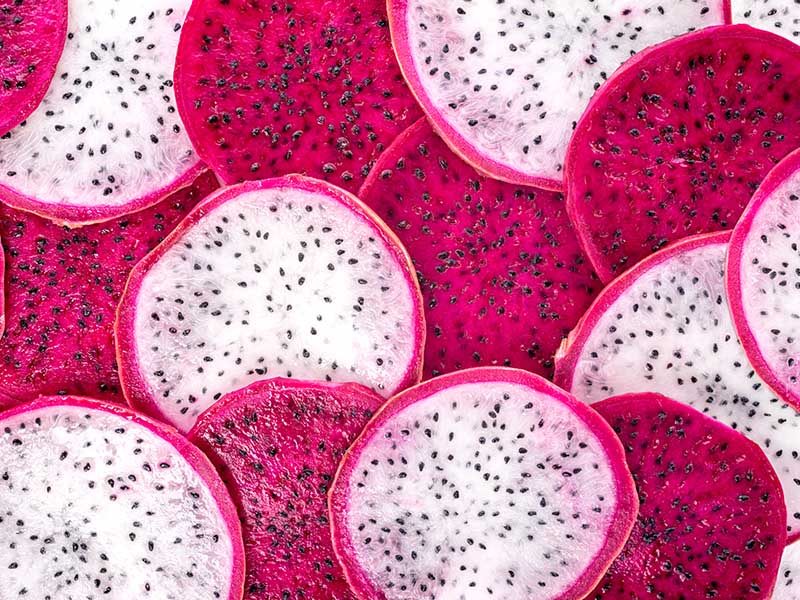
You may have guessed the etymological reasoning behind the name of this fruit. The fruit of the Stenocereus plant has bright pink, leathery skin and neon green scales, making the ripe fruit look like a dragon’s head, hence the name “dragon fruit.”
This fruit is the product of a cactus plant with the growth pattern of a creeping vine. Though there are many more varieties of dragon fruits, you will often find the “pink skin – white flesh” type or the “pink skin – pink flesh” one most widespread.
Dragon fruit has been heavily cultivated in East Asia, Southeast Asia, and the Americas for centuries. The texture resembles a firm kiwi with its mildly crunchy black seeds. Its sweet and mildly tangy taste makes dragon fruit a worthy fruit of the Asian summer.
Nutrients: Dragon fruit is rich in various antioxidants, including betalains, hydroxycinnamates, and flavonoids.
Season: Dragon fruits are the juiciest in the summertime, running from June through September.
How to eat: You simply remove the leathery pink skin and enjoy the sweet flesh inside.
16. Figs – Muhwagwa (무화과)
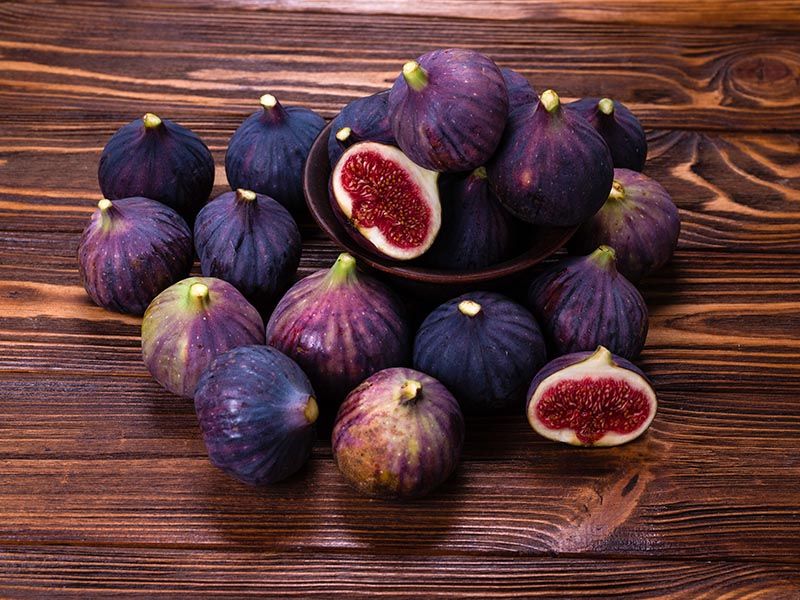
This unlikely fruit is a deliciously great agricultural product of the Yeongam region of South Korea. 60% of the entire fig crop in Korea comes from this because of the prime geographical condition of the area.
Figs are native to the Mediterranean and West Asian countries and have been heavily utilized as a crop and ornamental plant. The taste of fresh figs is so exquisite that there were rumors that figs were a favorite fruit of Cleopatra.
You can tell when figs are ready to be harvested when the fruit’s skin becomes succulent and tender to the touch. The flesh of ripe figs takes on a creamy white color that tastes sweet and juicy. The seeds are plentiful and crunchy, which offers a great pop of texture.
Nutrients: Figs are the powerhouse of calcium, fiber, magnesium, iron, potassium, and vitamins A and C.
Season: Figs have two harvests: A small crop in the early summer and a bigger one in late summer to early autumn.
How to eat: Thoroughly wash the fruits and eat them whole, from the skin to the flesh and seeds.
Figs in Korea are grown by the sea, which improves their flavors.
17. Strawberries: Ttalgi (딸기)
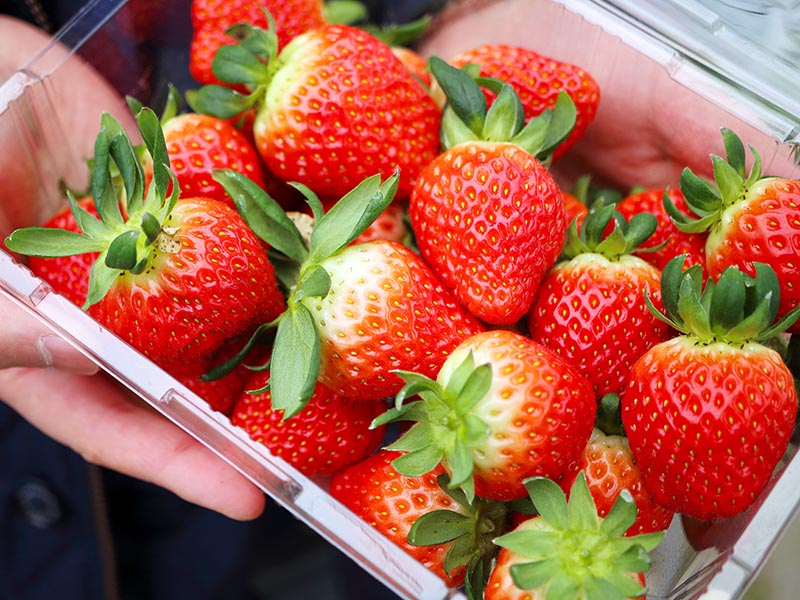
Korean strawberries are not like the typical ones that you find at any local grocery store. They are so succulent, vibrant, and fragrant that they have been hailed as a kind of delicacy. Koreans sure know how to make their strawberries impressive.
Korean strawberries are considerably bigger than many other types of strawberries. They are firmer in texture and have higher sugar content. The textural and flavor superiority of Korean strawberries distinguish them from other more commercial varieties.
Koreans macerate their berries in sugar instead of just blending regular dairy with strawberries to draw out the syrup and mix in the milk. Not blending gives the strawberry milk a beautiful texture and flavor. Another application for these delicious gems is to decorate yummy Korean pancakes.
Nutrients: Strawberries are rich in antioxidants, folate, Vitamin C and A, manganese, and potassium.
Season: Strawberry season is from December to June.
How to eat: You can eat strawberries raw or used in various drinks and desserts.
Go To Your Local Korean Store Today!
Did this list of Korean fruits leave your mouth watering? I hope it did because these fruits deserve recognition and appreciation. You should always aim to try all the fruits and vegetables that a country has to offer, and nobody has more than Korea.
If you’ve had a great time learning more about the wonderful world of Korean fruits, like and share it with your friends who are coming to Korea soon. Make sure to leave a comment about your favorite fruit or to add more to the list. See you next time!
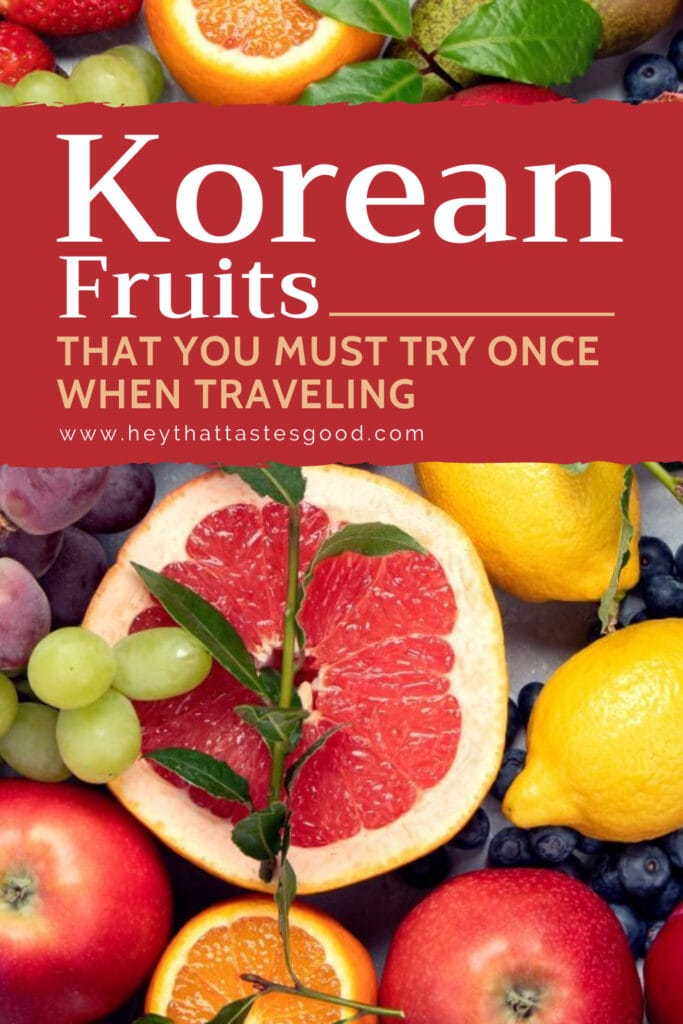


Linda Dean
Expertise
Culinary Arts, Food Journalism, Global Cuisine, Exploration, Recipe Development, Cultural Food Studies, Culinary Travel and Storytelling
Education
Culinary Institute of America, Hyde Park, NY
Program: Associate in Culinary Arts
Focus: Developed a comprehensive understanding of global cuisines and essential cooking techniques. Engaged in intensive hands-on practice in both kitchens and real-world settings, guided by expert chefs. This program emphasized the application of culinary skills in professional environments, preparing students for a variety of roles in the culinary industry.
City, University of London, London, UK
Program: BA Journalism
Focus: Gained expertise in media studies with a strong foundation in reporting, editing, and communicating. While the program focuses broadly on journalism, the skills acquired apply to food journalism, including the ability to analyze and report on food culture and culinary trends effectively.
Linda Dean is an experienced chef and food writer who loves exploring flavors from around the world. Trained at the Culinary Institute of America, Linda has spent over ten years mastering the art of making dishes that truly represent different cultures. She also studied journalism at City, University of London, which helps her write engaging stories about these foods.
On heythattastesgood.com, Linda shares recipes that bring the world’s kitchens to her readers. She focuses on authentic tastes and the stories behind them, making it easy for anyone to try international cuisine at home.